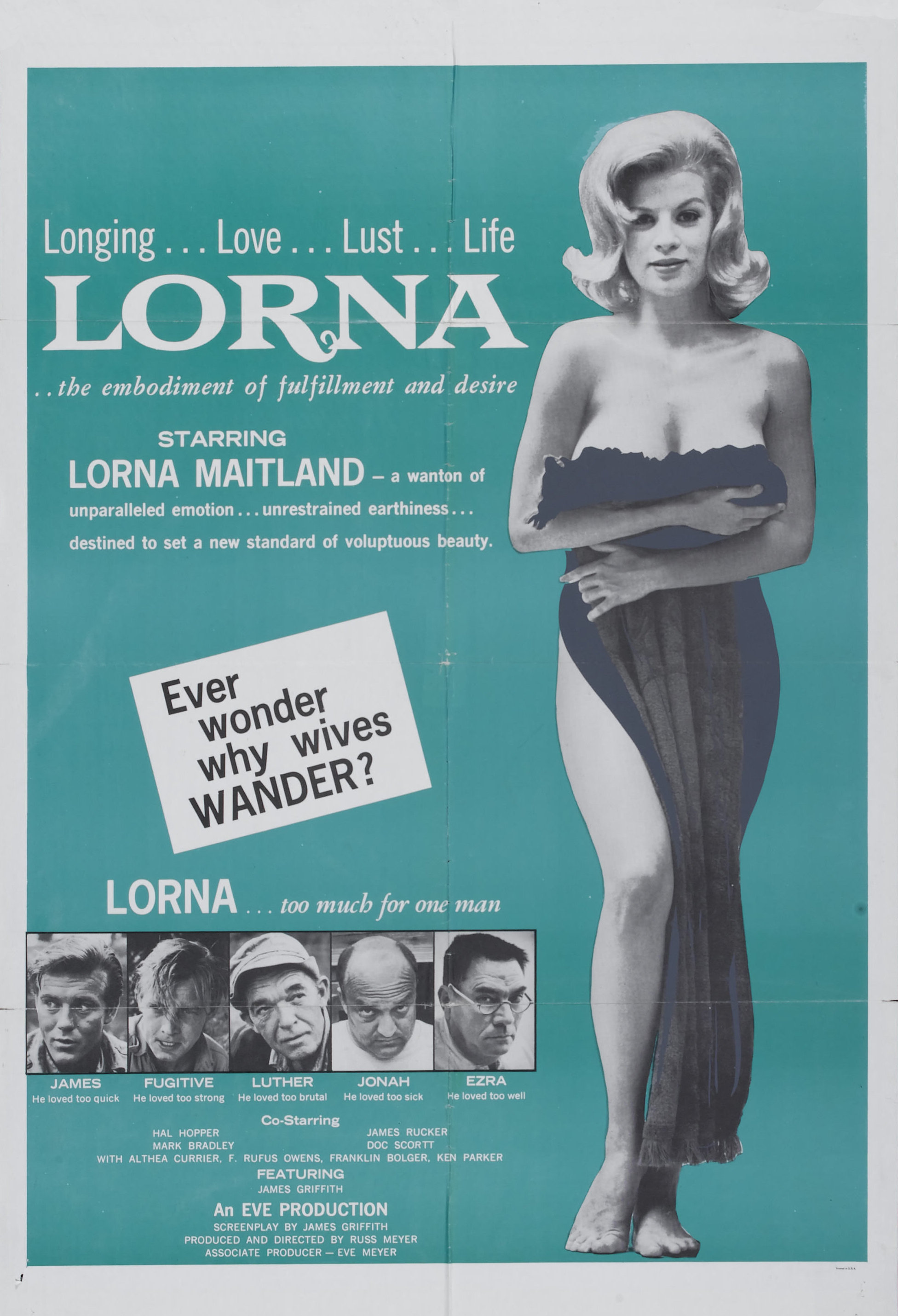|
Cinesexuality
Cinesexuality is a concept in film philosophy by feminist film theorist Patricia MacCormack which attempts to explain why people sometimes feel an intense attraction towards film. Origins MacCormack coined the term and used it as the title of her 2008 essay to describe her philosophical speculation about film, which is similar in some respects to the poststructuralist philosophy of desire by contemporary philosophers Gilles Deleuze and Félix Guattari. Meaning While the term is somewhat vague, she uses it to describe why there is a "desire which flows through all who want cinema as a lover," Joanna McIntyre, June 25, 2014, Culture and the MediaCinema Studies: Cinesexuality by Patricia McCormack, Retrieved Aug. 18, 2014, "...Cinesexuality is the desire which flows through all who want cinema as a lover. It knows no gender, no sexuality, no form, and no function. It describes a position of supplication before an unresponsive element. ... we are all already cinesexual’ " why film c ... [...More Info...] [...Related Items...] OR: [Wikipedia] [Google] [Baidu] |
Patricia MacCormack
Patricia MacCormack is an Australian scholar who lives and works in London, England. Currently she is Professor of Continental Philosophy in English and Media at Anglia Ruskin University, Cambridge. She has published extensively on philosophers including Gilles Deleuze, Felix Guattari, Maurice Blanchot, Michel Serres, Luce Irigaray, and concepts such as queer theory, teratology, body modification, posthuman theory, animal rights, horror films and antinatalism. In 2013 she was a visiting Leverhulme Fellow at the University of California, Santa Barbara. Books * ''The Schizoanalysis of Cinema'', edited with Ian Buchanan and including the chapter 'The Ecosophy of Film'. New York: Continuum. 2008. * ''Cinesexuality''. Routledge. 2008. * ''Posthuman Ethics: Embodiment and Cultural Theory''. Routledge. 2012. * ''The Animal Catalyst: Towards Ahuman Theory'', sole edited anthology, and including the Introduction and chapter ‘After Life’. Bloomsbury Academic. 2014. * ''Deleu ... [...More Info...] [...Related Items...] OR: [Wikipedia] [Google] [Baidu] |
Feminist Film Theory
Feminist film theory is a theoretical film criticism derived from feminist politics and feminist theory influenced by Second Wave Feminism and brought about around the 1970s in the United States. With the advancements in film throughout the years feminist film theory has developed and changed to analyse the current ways of film and also go back to analyse films past. Feminists have many approaches to cinema analysis, regarding the film elements analyzed and their theoretical underpinnings. History The development of feminist film theory was influenced by second wave feminism and women's studies in the 1960s and 1970s. Initially in the United States in the early 1970s feminist film theory was generally based on sociological theory and focused on the function of female characters in film narratives or genres. Feminist film theory, such as Marjorie Rosen's '' Popcorn Venus: Women, Movies, and the American Dream'' (1973) and Molly Haskell’s ''From Reverence to Rape: The Treatment ... [...More Info...] [...Related Items...] OR: [Wikipedia] [Google] [Baidu] |
Philosophy Of Film
The philosophy of film is a branch of aesthetics within the discipline of philosophy that seeks to understand the most basic questions about film. Philosophy of film has significant overlap with film theory, a branch of film studies. History The earliest person to explore philosophical questions regarding film was Hugo Münsterberg. During the so-called silent film era, he sought to understand what it was about film that made it conceptually distinct from theater. He concluded that the use of close-ups, flash-backs, and edits were unique to film and constituted its nature. Rudolf Arnheim, with the beginning of the era of synchronized sound for film, argued that earlier films were aesthetically superior to the "talkies". He held that by adding technologically synchronized sound to replace previous live-accompaniment of otherwise silent moving images, the unique status of film had been removed. Instead of being a unique art form that could carefully study bodies in motion, film ... [...More Info...] [...Related Items...] OR: [Wikipedia] [Google] [Baidu] |
Flesh For Frankenstein
''Flesh for Frankenstein'' is a 1973 horror film written and directed by Paul Morrissey. It stars Udo Kier, Joe Dallesandro, Monique van Vooren and Arno Juerging. Interiors were filmed at Cinecittà in Rome by a crew of Italian filmmakers. In West Germany and the United States, the film was released as ''Andy Warhol's Frankenstein'' (though only the title ''Frankenstein'' appeared on the print itself) and was presented in the Space-Vision 3D process in premiere engagements. It was rated X by the MPAA due to its explicit sexuality, nudity and violence. In the 1970s, a 3-D version played in London and Stockholm. A 3-D version also played in Australia in 1986, along with ''Blood for Dracula'', its obvious pairing. The gruesomeness of the action was intensified in the original release by the use of 3D. Plot Baron von Frankenstein neglects his duties towards his wife/sister Katrin, as he is obsessed with creating a perfect Serbian race to obey his commands, beginning by assembli ... [...More Info...] [...Related Items...] OR: [Wikipedia] [Google] [Baidu] |
Film Theory
Film theory is a set of scholarly approaches within the academic discipline of film or cinema studies that began in the 1920s by questioning the formal essential attributes of motion pictures; and that now provides conceptual frameworks for understanding film's relationship to reality, the other arts, individual viewers, and society at large. Film theory is not to be confused with general film criticism, or film history, though these three disciplines interrelate. Although some branches of film theory are derived from linguistics and literary theory, it also originated and overlaps with the philosophy of film. History Early theory, before 1945 French philosopher Henri Bergson's ''Matter and Memory'' (1896) anticipated the development of film theory during the birth of cinema in the early twentieth century. Bergson commented on the need for new ways of thinking about movement, and coined the terms "the movement-image" and "the time-image". However, in his 1906 essay ''L' ... [...More Info...] [...Related Items...] OR: [Wikipedia] [Google] [Baidu] |
2008 In Film
The year 2008 involved many major film events. ''The Dark Knight'' was the year's highest-grossing film, while ''Slumdog Millionaire'' won the Academy Award for Best Picture (out of eight Academy Awards). Evaluation of the year 2008 has been widely considered to be a very significant year for cinema. The entertainment agency website IGN described 2008 as "one of the biggest years ever for movies." It stated, "2008 was the year when the comic book movie genre not only hits its zenith, but also gained critical respectability thanks to ''The Dark Knight''. Animated films also proved a huge draw for filmgoers, with Pixar's ''WALL-E'' becoming not only the highest grossing toon but also the most lauded. Things got off on the right foot with the monster movie madness of ''Cloverfield''. Marvel got down to business laying the groundwork for their superhero team-up ''The Avengers'' with the blockbuster hit ''Iron Man'' and their respectable attempt at rebooting ''The Incredible Hulk''. ... [...More Info...] [...Related Items...] OR: [Wikipedia] [Google] [Baidu] |
Sex In Film
Sex in film, the presentation of aspects of sexuality in film, specially human sexuality, has been controversial since the development of the medium. Films which display or suggest sexual behavior have been criticized by religious groups or have been banned or censored by governments, although attitudes have changed much along the years and a more permissive social environment has developed in certain parts of the world, notably in Europe, North America, Australia and New Zealand. In countries with a film rating system, films which contain explicit sex scenes typically receive a restricted classification. Nudity in film may be regarded as sexual or as non-sexual. An erotic film is usually a film that has an erotic quality, meaning that it may arouse sexual feelings, even if the stated or suggested intention of the film maker is to induce philosophical contemplation concerning the aesthetics of sexual desire, sensuality and romantic love. Love scenes, erotic or not, have been p ... [...More Info...] [...Related Items...] OR: [Wikipedia] [Google] [Baidu] |
Bollywood
Hindi cinema, popularly known as Bollywood and formerly as Bombay cinema, refers to the film industry based in Mumbai, engaged in production of motion pictures in Hindi language. The popular term Bollywood, is a portmanteau of "Bombay" (former name of Mumbai) and " Hollywood". The industry is a part of the larger Indian cinema, which also includes South Cinema and other smaller film industries. In 2017, Indian cinema produced 1,986 feature films, of which the largest number, 364 have been from Hindi. , Hindi cinema represented 43 percent of Indian net box-office revenue; Tamil and Telugu cinema represented 36 percent, and the remaining regional cinema constituted 21 percent. Hindi cinema has overtaken the U.S. film industry to become the largest centre for film production in the world. In 2001 ticket sales, Indian cinema (including Hindi films) reportedly sold an estimated 3.6 billion tickets worldwide, compared to Hollywood's 2.6 billion tickets sold. Earlier Hindi film ... [...More Info...] [...Related Items...] OR: [Wikipedia] [Google] [Baidu] |
Dimensions Of Dialogue
''Dimensions of Dialogue'' ( cs, Možnosti dialogu) is a 1983 Czechoslovak animated short film directed by Jan Švankmajer. It is 14 minutes long and created with stop motion. Plot The animation is divided into three sections. "Eternal conversation" (Dialog věčný) shows Arcimboldo-like heads gradually reducing each other to bland copies; "Passionate discourse" (Dialog vášnivý) shows a clay man and woman who dissolve into one another sexually, then quarrel and reduce themselves to a frenzied, boiling pulp; and "Exhaustive discussion" (Dialog vyčerpávající) consists of two elderly clay heads who extrude various objects on their tongues (toothbrush and toothpaste; shoe and shoelaces, etc.) and intertwine them in various combinations. Reception Terry Gilliam selected the film as one of the ten best animated films of all time. Awards *Annecy International Animated Film Festival 1983 – Won Grand Prix *Berlin International Film Festival 1983 – Won Golden Bear for Best Short ... [...More Info...] [...Related Items...] OR: [Wikipedia] [Google] [Baidu] |
Suspiria
''Suspiria'' () is a 1977 Italian supernatural horror film directed by Dario Argento, who co-wrote the screenplay with Daria Nicolodi, partially based on Thomas De Quincey's 1845 essay ''Suspiria de Profundis''. The film stars Jessica Harper as an American ballet student who transfers to a prestigious dance academy but realizes, after a series of brutal murders, that the academy is a front for a supernatural conspiracy. It also features Stefania Casini, Flavio Bucci, Miguel Bosé, Alida Valli, Udo Kier, and Joan Bennett, in her final film role. The film is the first of the trilogy Argento refers to as ''The Three Mothers'', which also comprises ''Inferno'' (1980) and ''The Mother of Tears'' (2007). ''Suspiria'' has received a positive response from critics for its visual and stylistic flair, use of vibrant colors and its score by Argento and the progressive rock band Goblin. ''Suspiria'' was nominated for two Saturn Awards: Best Supporting Actress for Bennett in 1978, and B ... [...More Info...] [...Related Items...] OR: [Wikipedia] [Google] [Baidu] |
Alien (film)
''Alien'' is a 1979 science fiction horror film directed by Ridley Scott and written by Dan O'Bannon. Based on a story by O'Bannon and Ronald Shusett, it follows the crew of the commercial space tug ''Nostromo'', who, after coming across a mysterious derelict spaceship on an undiscovered moon, find themselves up against an aggressive and deadly extraterrestrial set loose on the ''Nostromo''. The film stars Tom Skerritt, Sigourney Weaver, Veronica Cartwright, Harry Dean Stanton, John Hurt, Ian Holm, and Yaphet Kotto. It was produced by Gordon Carroll, David Giler, and Walter Hill through their company Brandywine Productions, and was distributed by 20th Century Fox. Giler and Hill revised and made additions to the script; Shusett was the executive producer. The Alien and its accompanying artifacts were designed by the Swiss artist H. R. Giger, while concept artists Ron Cobb and Chris Foss designed the more human settings. ''Alien'' premiered on May 25, 1979, as the opening n ... [...More Info...] [...Related Items...] OR: [Wikipedia] [Google] [Baidu] |
Mario Bava
Mario Bava (31 July 1914 – 27 April 1980) was an Italian filmmaker who worked variously as a director, cinematographer, special effects artist and screenwriter, frequently referred to as the "Master of Italian Horror" and the "Master of the Macabre". His low-budget genre films, known for their distinctive visual flair and stylish technical ingenuity, feature recurring themes and imagery concerning the conflict between illusion and reality, as well as the destructive capacity of human nature. He was a pioneer of Italian genre cinema, and is regarded as one of the most influential auteurs of the horror film genre. After providing special effects work and other assistance on productions like ''Hercules'' (1958) and ''Caltiki – The Immortal Monster'' (1959), Bava made his official feature directorial debut with the horror film '' Black Sunday'', released in 1960. He went on to direct such films as '' The Girl Who Knew Too Much'', ''Black Sabbath'', ''The Whip and the Body'' (all ... [...More Info...] [...Related Items...] OR: [Wikipedia] [Google] [Baidu] |




